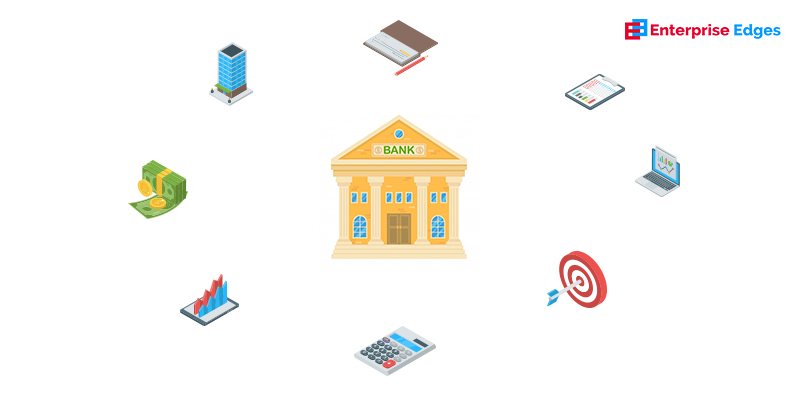The transformation in integration and modes of delivery of financial services is changing with fresh channels, financial products, and collaborations being tried. On such occasions, Banking as a platform has indeed appeared as a major alternative. The concept of ‘sharing economy’ was being highlighted quite a few years back. A lot of infographics, statistics, and references were being put forward in this context. Experts tried to figure out about the way the shares of the agents getting reduced, and the organizations handling the customer interface are the real beneficiaries.
Those who don’t even understand what BaaP is would agree with the fact that the regular business modes of banks are acknowledging it. It is a model by which the officeholders will have to associate with being there in the competition. The concept has indeed provided the public banks an opportunity to make the most of technology to provide greater service for the account holders. Ultimately, the scope of digital banking services is pretty high.
The Concept of BaaP
To understand the banking as a platform concept, it is essential to distinguish the basic business models. In this context, it can be divided in to pipeline model and platform model. Understanding these business models can also be effective in terms of understanding the importance of a digital banking service. Thus, the two business models being talked about here are the Pipeline model and Platform model.

In the case of the pipeline model, the prime hilt remains with the trades, in comparison with the available properties. It also provides authority over each aspect of product development and modes of distribution. It’s indeed a traditional model that has been there before digital banking platform concepts. To make things simpler, the regular business methods that depend upon the straightforward chain structure can be taken as the reference.
In the platform model, here, the approach is based on forming connectivity, over having control. There are various public service based digital ventures, other than the fintech services as well, which can be counted under this. The prime aim of the model is to develop an expansive and financial risk-free development that links the consumers with the services they look for.
Experts have to claim that even though the digital banking transformation concept is pretty fresh, the platform business model and the connectivity they develop have been there even before the inception of digital technology. Technology has indeed transformed many things. The point is, now the end-users can decide about the worth by own through the digital model. The future of banking is certainly going to be more established on the models of such.
Is Banking as a Platform Entirely New?
Financial organizations using smart technologies have significantly grown in the past few years. Moreover, their business strategies and set-up have developed in a noteworthy fashion to encompass more territories and destinations, in comparison with even international banks. Platform strategists have ultimately created a much-needed revolution in various areas. However, when it comes to the banking or financial sectors, they are indeed not as active.

Platform strategy can simply be referred to as those developed by the leading tech houses back in the 90s; be it IBM, Intel, Microsoft, or Cisco. Talking about the current scenario, companies like Google have also done a significant job. Things differ a bit in the case of those like Visa in the case of banking sectors; because in such occasions as a network, it has become quite essential to establish a platform plan.
Moreover, the strategy has to be set in such a way that every dimension of the banking services has to be connected. This is where banking, as a platform, is tricky. On such occasions, most of the financial bodies fall under the platform strategy of those like Visa but don’t have their strategy.
In the insurance sector, establishing a complete channel of the financial gents, broking parties and more doesn’t seem like an effective model, because it is confined within a distribution model. A smart digital banking transformation indeed appears as a potential solution.
The Development and Growth of Banking as a Platform
Be it about the Fintech services or any fresh model, everything at its core is a technology-powered strategy. The technology intervention is not something naive in the financial arena. There is enough evidence to claim that the fintech platforms have been there since the 1950s. Initially, it was in the form of credit cards, which turned money simply into a concept instead of anything physical.
ATMs can be claimed as the next stage of evolution in this regard. Before the platform based banking, the e-commerce business methods and web appeared in the scenario. It is here to note that e-commerce and web-based ventures were already there by the 90s. Maybe, the internet of things (IoT) devices will be ruling the scenario in upcoming days. Ultimately, the past fifty years of developments have set a financial technology model that was not even in the minds of many. Talking about the present scenario, banking platform software is the hot concept among the IT houses keeping the future in mind.

In the present scenario, almost ten years of the digital boom, smartphones have indeed taken center stage. The everlasting associative bonding between the financial domain and technology has indeed created opportunities for the start-up houses that make banking service explicitly digital-based. Banking as a platform API is going to change the scenario entirely, in comparison to what it was 20-30 years past. The availability of technology is also a major factor. Today internet is available 24×7, even at the remotest zones.
Similarly, the abundance of financial data, commercial details and more has made things perfectly strategic, in comparison to the way it was a few years back. The concept of commerce may entirely change in upcoming days, transforming from just a physical commodity to something that is based on demand.
Banking as a service and banking as a platform is going to be interesting through the advent of new technologies, or simply with growing digitization. Ultimately, the time has come when the classic business models go in concurrence with the rise of banking as a platform. It’s fine if they turn out to be an active participant on the platform of someone else. Otherwise, they may also set the platform of their own for the delivery of financial services.
Why still some Financial Service Providers Connect to Form Platforms?
There are primarily the following reasons behind the financial service arena at present did not strategize well to be the platforms.
Having an Already Established Business Model
The primary business strategy or model of the financial companies at present is not ready to make them available for the network model. On the other hand, the participation of these is quite felt essential for the digital banking transformation. Anyway, the banking business models take advantage of the marginal economy. It can be claimed that they haven’t yet realized the scope of the network model. After all, it is obvious to find taking up someone’s accumulation on the whole, and don’t share the same.
The Frontrunners are not Bothered
The problem with any process is that the changes don’t occur until the need is felt. Similar seems to be the case about digital banks as well. The banking sector used to be the absolute mediators until the recent scenario. They seemed to be at the perfect state to take decisions regarding credits. They feel no necessity of developing a platform with the associates, in a scenario where the others are ignorant about the modes of lending in a more effective way than the present groups.
Taking the Customers for Granted
It is quite evident that in the financial services industry, the way organizations communicate with each other or are in the association is moreover dependent upon the key players and the business of financial services. Now when the industry owns the prospect of the way a financial product is made available with the end-user, creating a platform with the associates’ is obviously not to be a serious concern.
These situations are pretty explicit and saved the financial services industry key players from the scenario confronted into various other sectors and privately owned groups. In the present scenario, digital technologies or digital banks indeed seem pretty effective in terms of credit evaluating and analyzing the risk factors. But in comparison, collecting data from the past was not an easy task. In the present scenario, the same can be availed in plenty.
The digital economy mated with considerable modifications of the norms has minimized the constraints of getting into the market to a significantly nominal level. Top companies, especially the leading tech houses, can enter into the market anytime they wish. In such scenarios, the bank as a platform should be studied well. Moreover, things are essential to be addressed before financial organizations get deep into the threats of being the leading players or the main intermediaries for engaging with the customers.